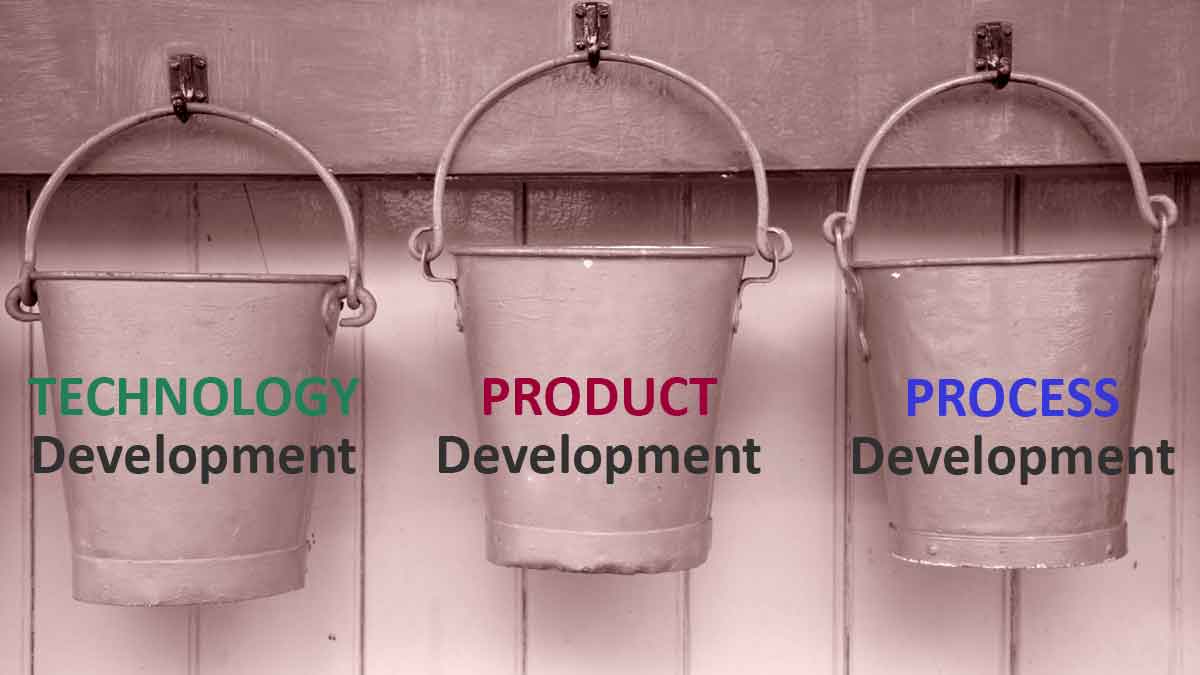It may seem safe to only work on “me-too” and incremental new products. But it’s not. Adams’ Risk Paradox is, “A business built on low risk is at great risk.”
b2bgrowth.video/42 Video length [2:20]
Blog Category: Product Development
Technology- vs. product-development
Technology development is science-facing; product development is market-facing. The former turns money into knowledge; the latter turns knowledge back into money.
b2bgrowth.video/41 Video length [2:34]
Invigorate your stage-and-gate process
A stage-and-gate process does much well, but only manages the interface between a company and its teams. Add “customer insight skills” for the interface between teams and customers.
b2bgrowth.video/40 Video length [2:10]
Launch new products with power
You want to deliver the right product to the right market using the right message through the right media. To do this, use AIM’s approach: “Who to tell… What to tell… How to tell.”
b2bgrowth.video/39 Video length [2:40]
Pursue fast innovation
You can deliver $80,000 of NPV by accelerating a typical B2B new product launch by just one month. Here are 4 ways to accelerate your projects… and boost success rates while you’re at it.
b2bgrowth.video/38 Video length [2:26]
Build a front-end business case
Here are the 12 points of a strong B2B Business Case. Also consider an abbreviated-but-powerful 6-point “Market Case” as your entry ticket into the development stage.
b2bgrowth.video/37 Video length [2:49]
Benchmark competing alternatives
The price premium your product gets is driven by its value over customers’ next-best alternative. Here’s the only reliable way to quantitatively assess competing products’ value.
b2bgrowth.video/36 Video length [2:41]
Insist on data-driven innovation
These 4 common practices practically ensure confirmation bias and squandered new-product R&D. Escape this trap with quantitative interviews and Market Satisfaction Gaps.
b2bgrowth.video/35 Video length [2:45]
Use value calculators to establish pricing
These let you move from supplier-focused pricing (cost-plus) and competitor-focused pricing to customer-focused pricing. It’s the only way to avoid leaving money on the table
b2bgrowth.video/34 Video length [2:27]
Conduct B2B customer tours
Supplement your customer interviews with tours. Use them to a) gather context for interviews, b) look for improvement ideas, and c) gather economic data for new-product pricing later.
b2bgrowth.video/33 Video length [2:35]
When to use “hired guns” for VOC
Should you hire a firm to conduct your voice-of-customer interviews, or train your own people to do this? Consider these four factors to find the answer for your business.
b2bgrowth.video/32 Video length [2:34]
Conduct virtual customer interviews
Sure, in-person interviews are the gold standard… but “virtual VOC” has surprising advantages. Blend in-person and web-conference interviews to optimize effectiveness and efficiency.
b2bgrowth.video/31 Video length [2:38]
It’s wise to clearly separate your R&D into 3 buckets.
Bucket #1 is Technology Development… science-facing innovation that turns money into knowledge. Bucket #2 is Product Development… market-facing innovation that turns knowledge back into money. Bucket #3 is Process Development… optimizing the production of existing products to make money more efficiently. Don’t focus on customer needs for Bucket #1 (it’s too early) or #3 (it’s too late)… but do this very well for Bucket #2. In the entire money-making process, this is your greatest point of leverage today.
More in article, Target Customer Needs and Win
Trigger fresh ideas in customer interviews
If you want to unleash the full brainpower of B2B customers during a qualitative Discovery interview, introduce them to a trigger method. One such method is the Trends Map.
b2bgrowth.video/30 Video length [2:05]
